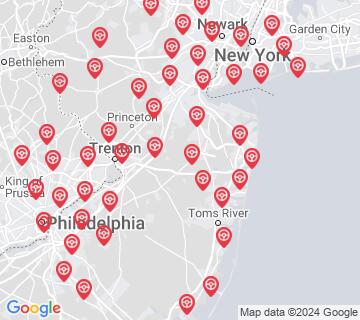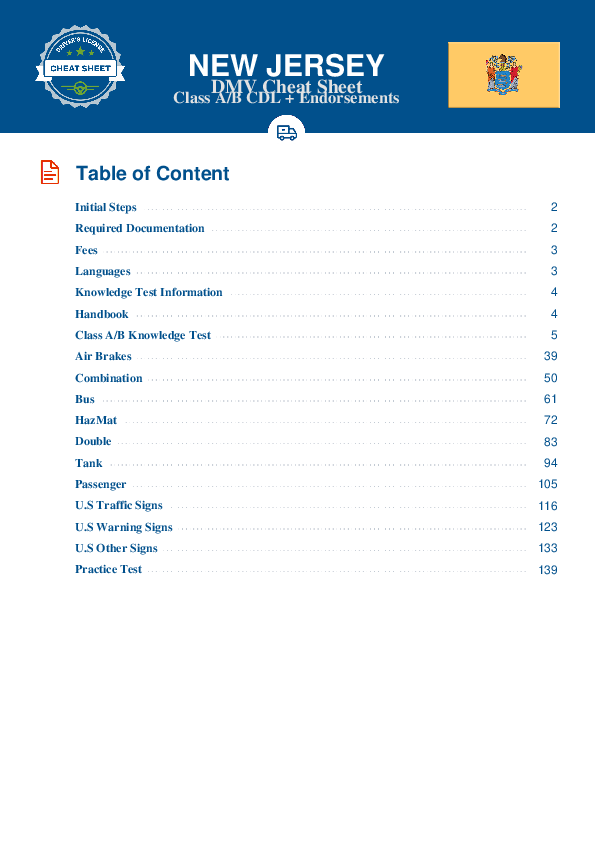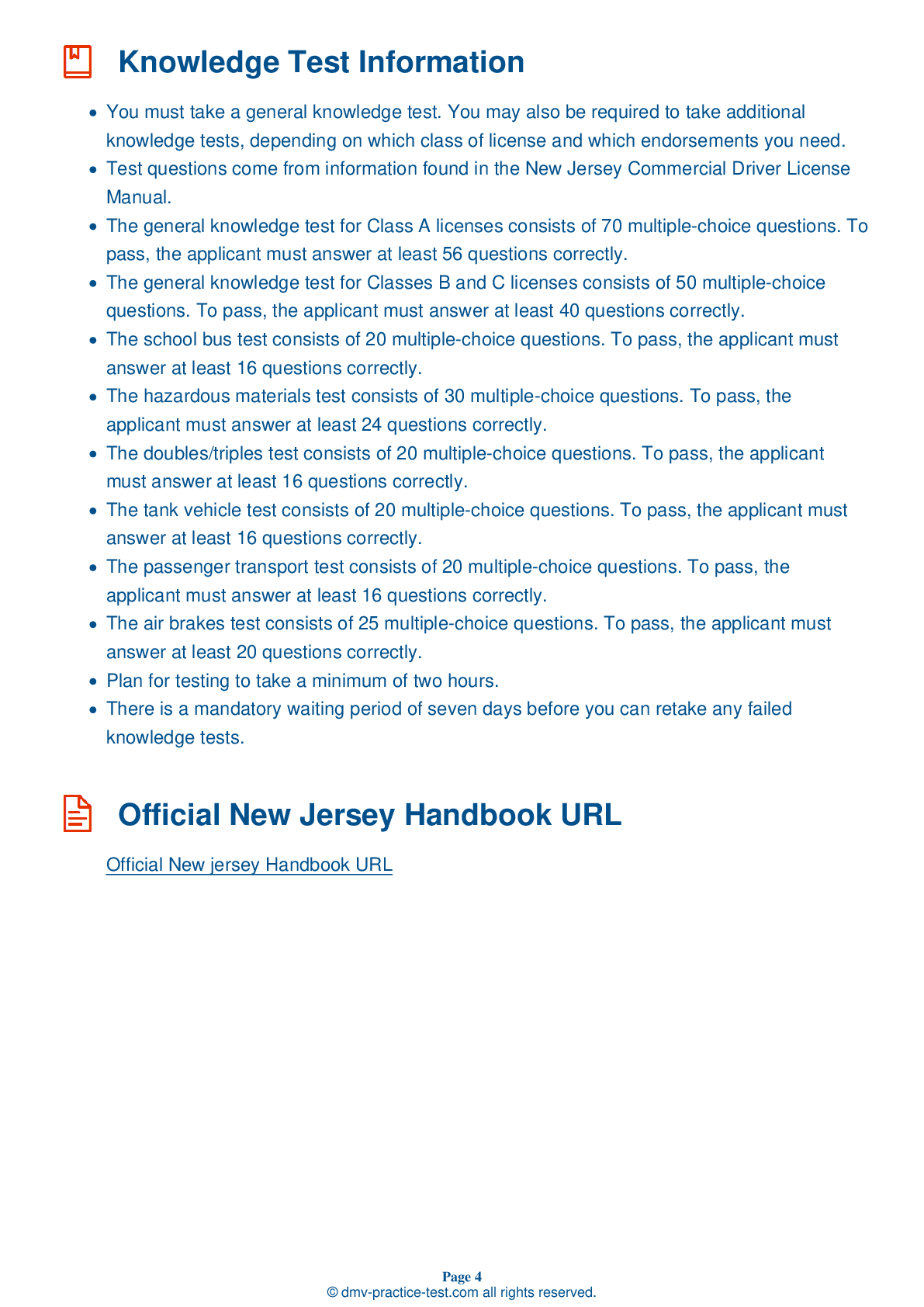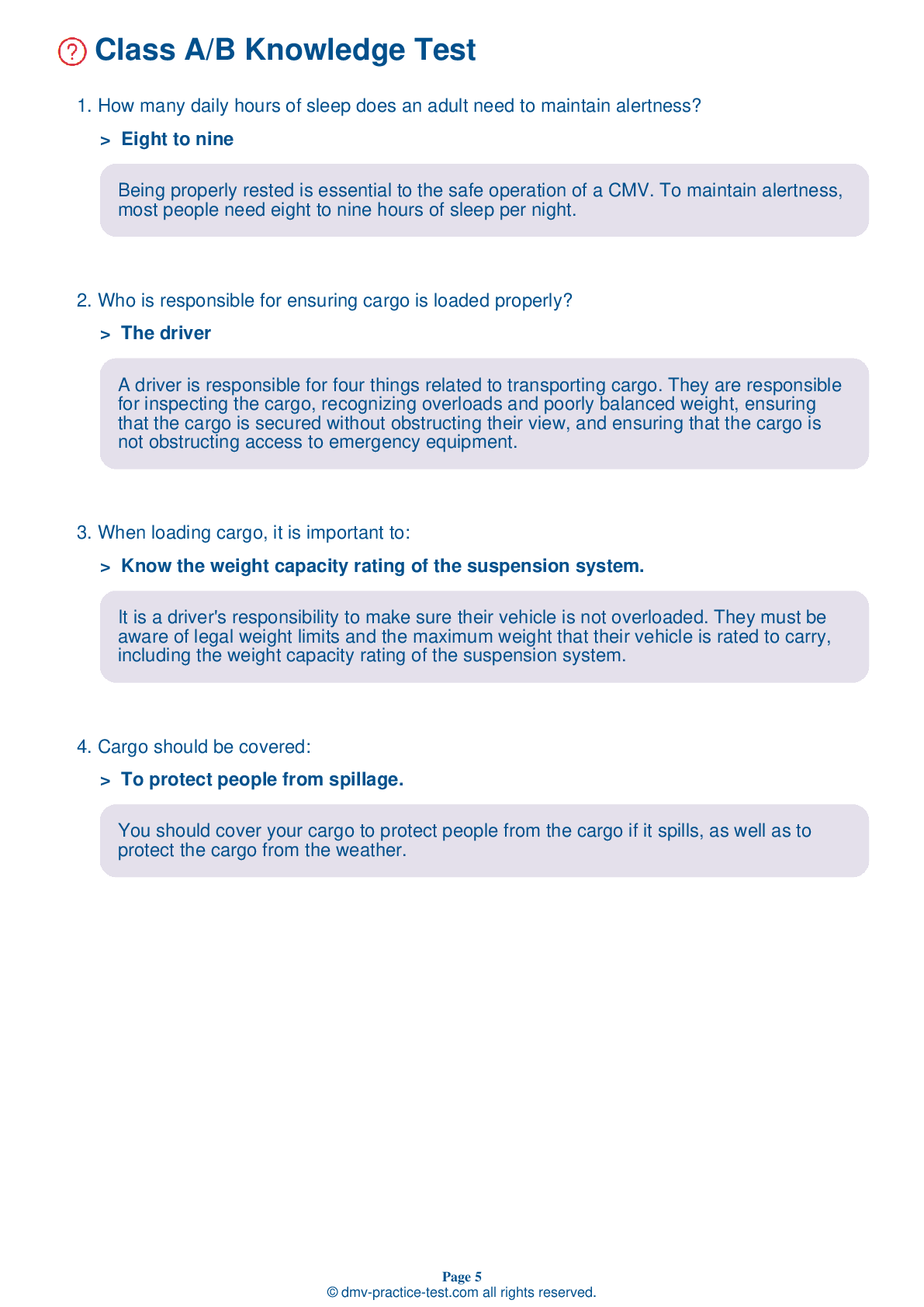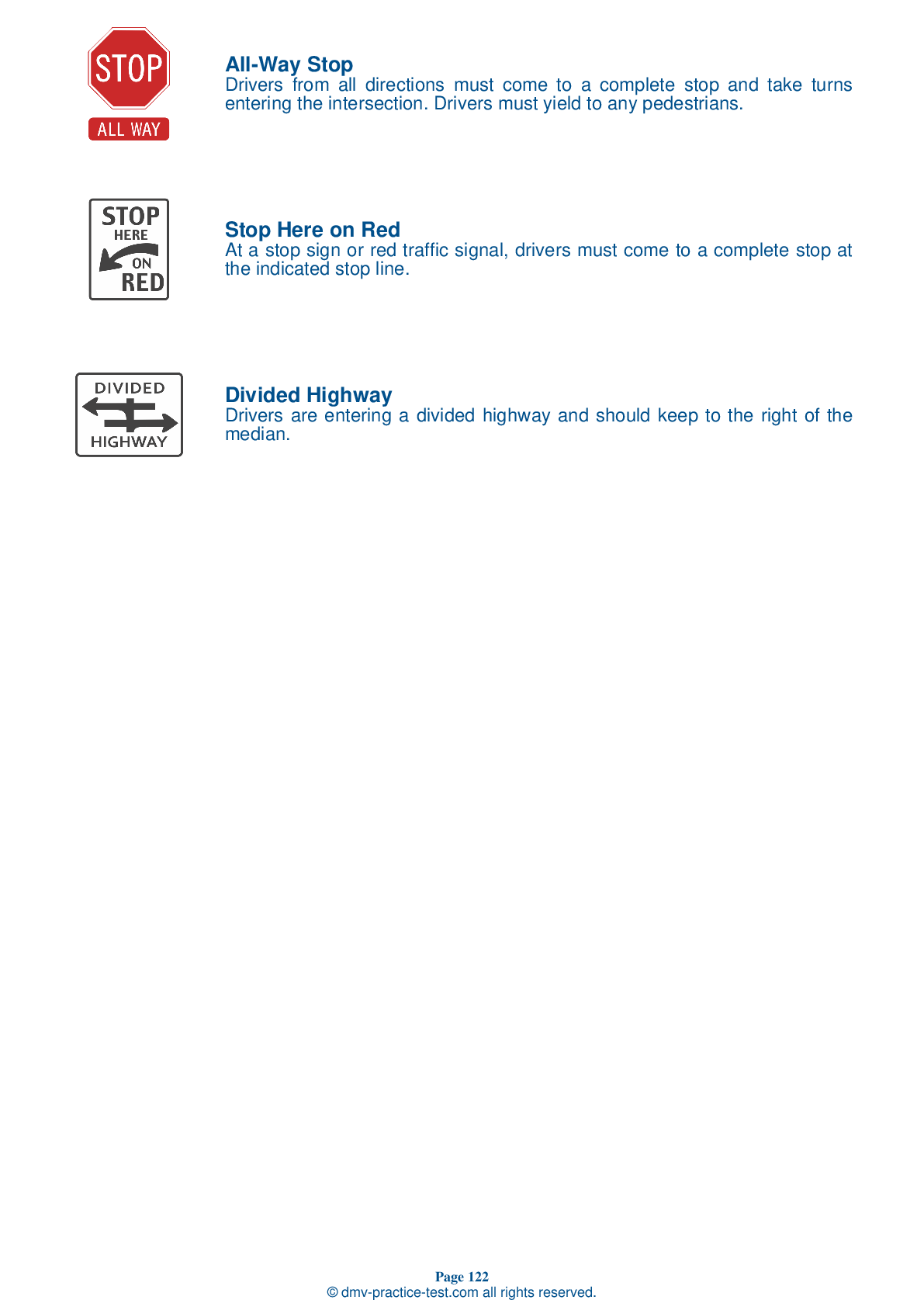Knowledge Test Class B #2
Class B Driving Test | New Jersey 2025 #2 Page 5 of 7
Train for FREE online with our New Jersey class B license test. The official exam test consists of several obligatory parts, with all of them checking your knowledge of different blocks of road rules. If you need to obtain a NJ CDL class B permit in 2025, practice as much as possible. Free sample tests published on our website will help you check and improve your knowledge and boost your grades. Please bear in mind that CDL class B requirements may vary from state to state.
50
40
20
29 . When doing an inspection, make sure your brake pads are:
Free of oil and grease.
Potential problems to check for when inspecting brakes include cracked drums; shoes or pads with oil, grease, or brake fluid on them; and shoes that are missing, broken, or worn dangerously thin.
30 . While driving downhill, you should brake until you reach a speed that is ____ below your safe speed, then release the brake pedal.
20 mph
While driving downhill, you should hold down the brake pedal until your vehicle reaches a speed 5 mph below your safe speed, then release the brake pedal. Repeat this process.
31 . If stopped on the side of the road, how should you alert other motorists?
Keep the driver's side door open.
If you must stop on the side of the road, it is important to turn on your four-way emergency flashers to warn other road users.
32 . Tires of mismatched sizes:
Should not be used on a vehicle.
Having tires of mismatched sizes on a vehicle is a problem that should be fixed if discovered during a vehicle inspection.
33 . If caught driving without an active license, you will:
Lose your license for at least 60 days.
A first conviction of driving a commercial motor vehicle while your CDL is suspended, revoked, canceled, or disqualified will result in the loss of your license for at least one year.
34 . You may be denied a HazMat endorsement if:
You do not suffer from a mental illness.
You will be denied a HazMat endorsement, or lose an existing endorsement, if you are not a lawful permanent U.S. resident; you renounce your U.S. citizenship; you are wanted for, under indictment for, or convicted of certain felonies; you are judged as mentally unstable or are committed to a mental institution; or you are deemed to pose a security threat by the Transportation Security Administration (TSA).
35 . A low air pressure warning signal should activate:
When tank pressure falls below 5 psi.
In an air brake system, a low air pressure warning signal must come on if air pressure in the tanks falls below 60 psi. This warning signal may come in the form of a light, a buzzer, or a wig wag.
Search the best driving school in your neighbourhood
2025 New Jersey | Frequently Asked Questions
A CDL Class A license in New Jersey is a commercial driver's license that allows the holder to operate any combination of vehicles with a Gross Combination Weight Rating (GCWR) of 26,001 pounds or more, provided the GVWR of the vehicle(s) being towed is in excess of 10,000 pounds. It includes tractor-trailers, truck and trailer combinations, and flatbeds.
A Class A CDL license in New Jersey allows operators to drive vehicles such as tractor-trailers, truck and trailer combinations, flatbeds, livestock carriers, and tank vehicles. It's also needed to operate any combination of vehicles with a Gross Combination Weight Rating (GCWR) of 26,001 lbs or more where the towed vehicle exceeds 10,000 lbs.
To obtain a Class A CDL license in New Jersey, you must be at least 18 years old (21 for interstate driving), have a valid driver's license, pass a vision test, and complete a medical examination. You'll also need to pass a knowledge test and skills test which includes a pre-trip vehicle inspection, basic vehicle controls, and on-road driving.
In New Jersey, you must be at least 18 years old to qualify for a Class A CDL license. However, to use it for interstate driving or to transport hazardous materials, you must be at least 21 years old. These age requirements are in place to ensure the safety of all road users.
Endorsements are not required for a Class A CDL license, but they allow you to operate specific types of vehicles or haul certain types of cargo. In New Jersey, endorsements include T (Double/Triple Trailers), P (Passenger), N (Tank Vehicles), H (Hazardous Materials), and S (School Bus). Each endorsement requires additional knowledge tests.
The Class A CDL skills test in New Jersey encompasses three parts: a pre-trip inspection to assess your ability to check the vehicle for safety issues, a basic controls test to evaluate your skills in controlling the vehicle, and a road test to confirm your ability to drive the vehicle safely in various traffic situations and conditions.
Yes, there are limitations for Class A CDL license holders in New Jersey. These may include restrictions based on medical conditions, failing certain parts of the skills test, or not meeting age requirements for interstate driving. Also, without specific endorsements, drivers may be restricted from operating certain types of commercial vehicles or transporting specific types of cargo.
Yes, in New Jersey, the written Class A CDL test is available in multiple languages, including Spanish. However, the Federal Motor Carrier Safety Administration requires that all commercial drivers demonstrate proficiency in English to read road signs, communicate with officials, and complete logs and other paperwork.
Yes, New Jersey Motor Vehicle Commission provides accommodations for individuals with disabilities taking the Class A CDL written test. You must submit a request for special testing accommodations. This may include extended time, a separate testing area, or assistance with reading the test. It's important to communicate your needs prior to scheduling your test.
If you don't pass the Class A CDL written test in New Jersey, you can retake it. However, you must wait at least 7 days before retaking the test. There's no limit to how many times you can retake the test, but each attempt requires a testing fee. Preparation and study are key to passing on your next attempt.
